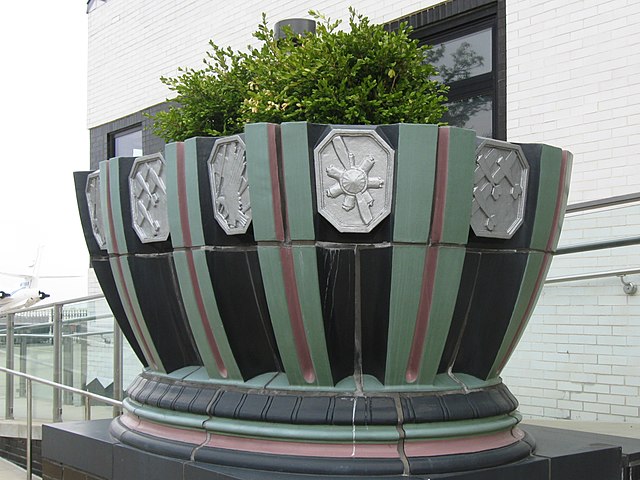
Colorful Art Deco ornament on a building in the Washington Road business district, the Pittsburgh area’s most thoroughly Art Deco neighborhood.


These splendid details are on a building that, at first glance, seems utterly undistinguished. A bit of sensitive restoration to the storefronts could emphasize the Art Deco character of the building and make it more of an ornament to its streetscape.

























